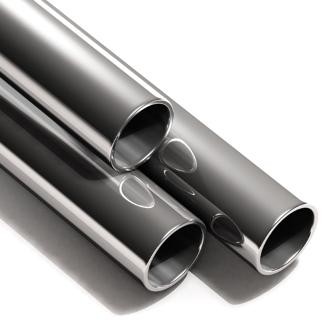We've had some questions about using liquid metal or indium alloys liquid at room temperature containing indium and gallium, and their reaction to stainless steel.
Many scientists are actively searching for a stable, thermally conductive liquid material to replace NaK. Our data sheet on the liquid indium/gallium metals indicates that these are corrosive to many metals. Will the liquid metals which are indium and gallium (Indalloy 51E) react with stainless steel?
Here was the answer by our metallurgist, Bob Jarret:
Short Answer:
The gallium alloys have been tested as replacements for NaK liquid metals for reactor vessels and have performed acceptably up to ~600°C. They are also used in switches with immersed stainless steel electrodes (the make/break element is usually tantalum to reduced arcing damage). I don't think you will see any wear in stainless components at the temperatures used for the application of Indalloy 51E.
Long Answer:
Any liquid metal will wet another clean metal surface. In practical interactions, thin layers of oxygen, nitrogen, and carbon are often sufficient to prevent the wetting (the science of surface chemistry and fluxes has been developed to overcome these issues).
The gallium alloys are able to break down this surface layer without any flux. This puts the base metal and the liquid alloy in intimate contact. If the base metal has appreciable solubility in gallium, it will dissolve. The rate is limited by the mass transport from the solid into the liquid alloy. Temperature, turbulence, and solubility of gallium in the metal affect the rate.
If the temperature of the exposure is hot enough, the stainless steel elements will begin to dissolve into the alloy. Turbulence at the surface of the alloy breaks down the diffusion boundary layer—like stirring to dissolve sugar in coffee. Up to ~400-600°C iron, chromium and nickel in stainless steel are essentially mutually-insoluble with gallium (as is the case with the refractory elements tantalum, tungsten, molybdenum, zirconium, titanium, etc). Above this temperature, the elements in stainless steel begin to dissolve in the gallium.
Aluminum is in the same Periodic Group as gallium and the two have wide solution ranges--~20% gallium is soluble in solid aluminum and ~1% aluminum dissolves in gallium at its melting point. When the gallium alloys come in contact with aluminum, essentially no diffusion barrier prevents the gallium from displacing aluminum in the solid and turning into an Al-Ga amalgam.


